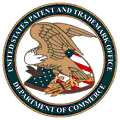
What do you get if you mesh a dual-orientation handset together with a slide-out keyboard and a tracker ball? Potentially, the next BlackBerry from Research in Motion (RIM), if its latest patent application is anything to go by.
 What RIM patents here has plenty of prior art and we recently saw an incident where RIM actually sued unnecessarily, attacking a weaker company like Motorola using weak patents applicable to wireless communication standards. The Nokia N810 and the Mylo from Sony seem rather similar to the design in this patent application, but this does not seem to bother or deter RIM. Remember what these people think: More Patents = More Innovation. But not so fast!
What RIM patents here has plenty of prior art and we recently saw an incident where RIM actually sued unnecessarily, attacking a weaker company like Motorola using weak patents applicable to wireless communication standards. The Nokia N810 and the Mylo from Sony seem rather similar to the design in this patent application, but this does not seem to bother or deter RIM. Remember what these people think: More Patents = More Innovation. But not so fast!
It seems like a patents blog has just shown up (or been born) in C|Net and it now speaks about the "first-to-file" rule, which renders the whole system utterly pointless and prone to error.
Generally, the first person to file the lawsuit gets to choose where the suit is brought. This is called the "first-to-file" rule. It works much like the lines you stand in at the grocery store, airport security, or countless other places; it's simply first come, first served.
However, in the context of patent litigation, being first in line is a big deal. Different courts have different procedural rules that can affect the way a case is litigated and the speed at which the case goes to trial. Moreover, there is a perception that courts in certain areas are more plaintiff-friendly than others.
The open source wave could soon power drug discovery initiatives in the country. A decentralised, web-based initiative is emerging that would enable scientists from laboratories, universities, institutes, and drug Companies to work together in discovering new drugs for diseases like tuberculosis (TB), malaria, various types of cancer, AIDS, Chikungunya, Kala-azar, dengue fever, etc.
Significant public funding along with the ability for private enterprise to benefit from the open source approach will result in a strong public-private partnership and ensure success of the open source approach.
The idea, taking off from successful open source models such as the human genome sequencing initiative, is very simple. All the relevant data and accumulated intelligence on a particular disease, tuberculosis to begin with, would be hosted online.
One of India's top genetics researchers has called for a global, collaborative effort to design a new tuberculosis (TB) drug using an 'open source' approach.
Software is not the only field affected by open source; many fields of study and social and political views have been affected by the growth of the concept of open source. Advocates in one field will often support the expansion of open source in other fields, including Linus Torvalds who is quoted as saying, "the future is open source everything."
Not everyone within synthetic biology takes the open-source approach, Andrew Hessel, an iGEM consultant who recruits teams from Canadian universities, told me, but the driving force behind it is iGEM and MIT (Rettberg works with renowned hacker-turned-synthetic biologist Tom Knight). Hessel likened the atmosphere to the time when computers were first becoming cheap enough to be affordable by anyone who wanted one, and young, bright kids began to play around with code.
Some of the world's biggest drug companies are finding that their genetic research is worth more to them if they give it away.
The team used Python, libxml/libxslt and TeX, running on Debian GNU/Linux, and the open document standards TeX, XML, MathML, XHTML, and Xlink, says Geering.
Open source methods have delivered tangible benefits in the computer science community. We describe here efforts to extend these principles to science generally, and in particular biomedical research. Open source research holds great promise for solving complex problems in areas where profit-driven research is seen to have failed. We illustrate this with a specific problem in organic chemistry that we think will be solved substantially faster with an open source approach.
Open Source biology could be a powerful tool, giving us access to cheap and abundant solar energy.
More than a million Americans take Avandia every year; the risk Glaxo had found would mean thousands of extra heart attacks. But the company argued that the risk only occurred in patients who already had serious heart problems, and that it didn't show up in long-term clinical trials. The FDA made no decision, and no public statement.
[...]
It's an open source approach to drug safety.
"Open source" as applied to culture defines a culture in which intellectual property is made generally available. Participants in such a culture are able to improve and modify those products and redistribute them back into the community.
"We have thought about this for more than five years. It's long enough," said Mongkol na Songkhla, who is leading one of the biggest challenges to Big Pharma's patent rights in years.
--Slated, March 4th 2008
Comments
mcintosh
2008-03-06 12:58:30